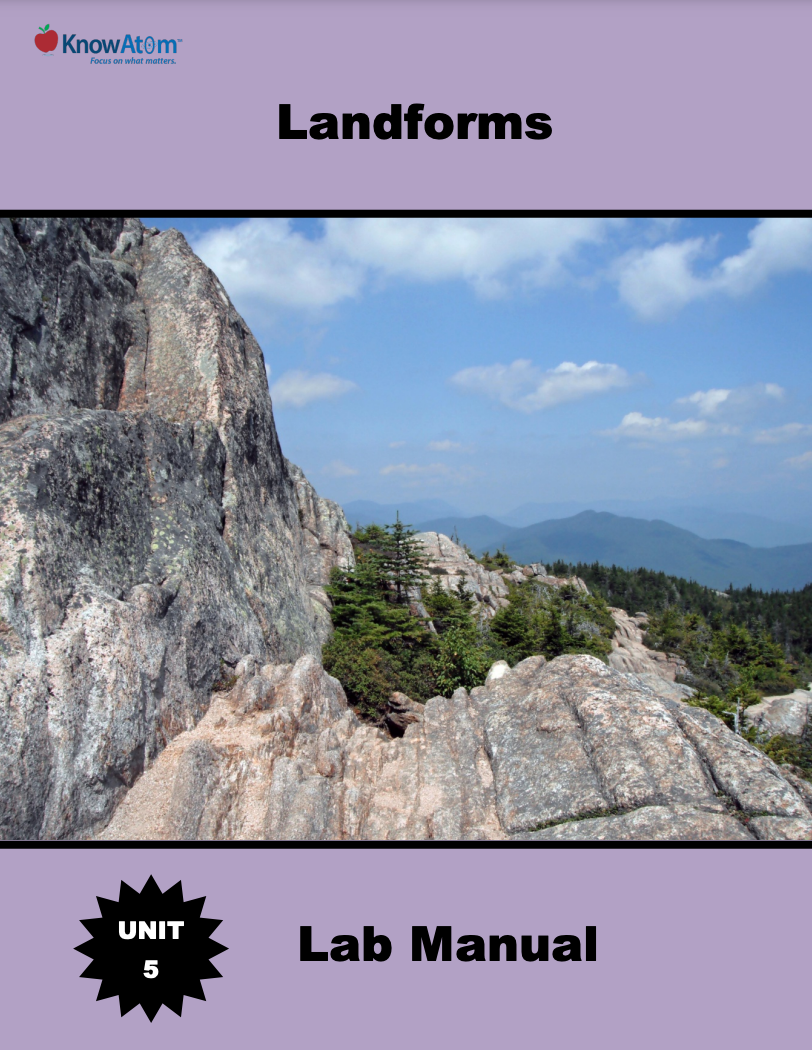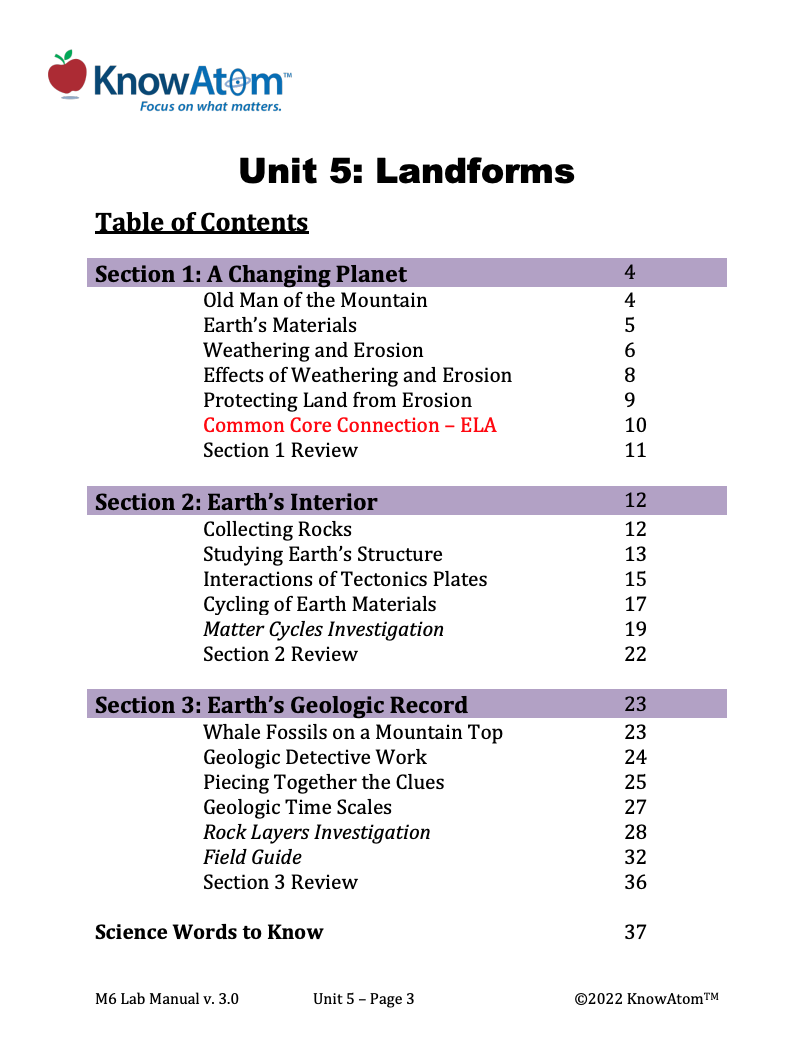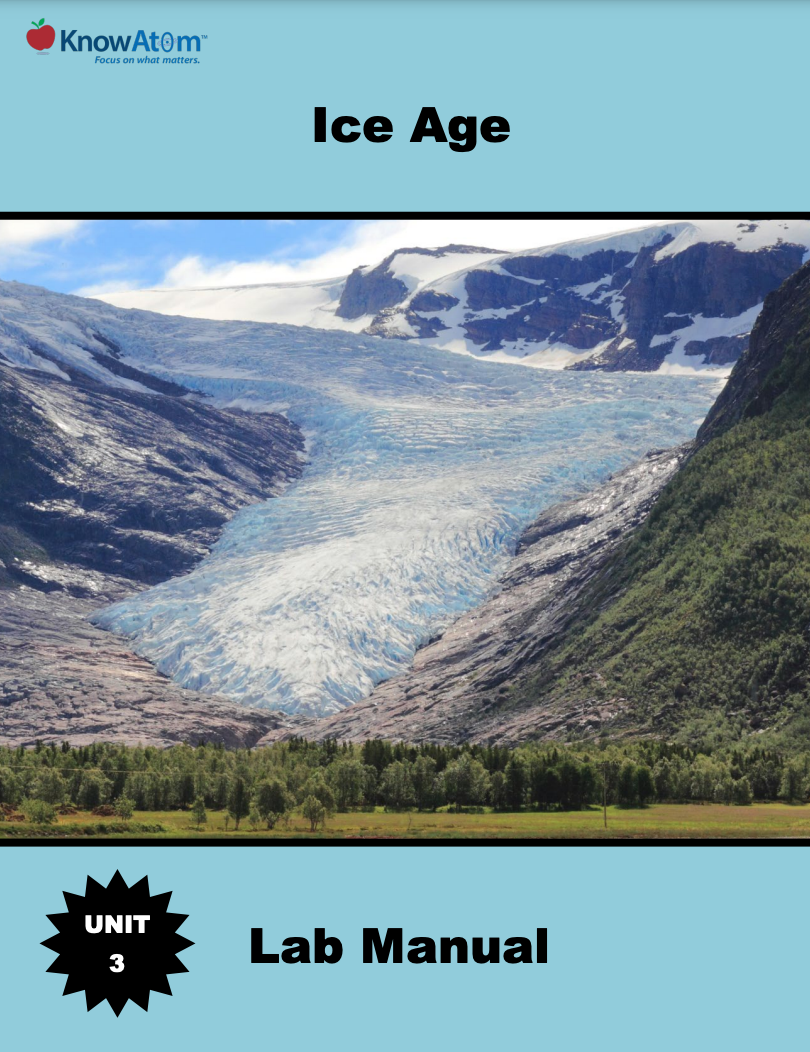.png)
In this unit, students use what they know about the relationship between energy and matter to investigate phenomena of how energy powers the cycling of Earth materials. They begin with this lesson on modeling the Earth processes that form different kinds of rock. This page provides an overview of this lesson.
.png)
In this unit, students focus on the phenomena of Earth’s ice as they model how glaciers shape Earth’s surface. In this lesson, they investigate how scientists use ice cores to reconstruct Earth’s past climates and environments. This page is a high-level extract of this lesson.
.png)
In this unit, students focus on phenomena related to Earth’s ice as they model how glaciers shape Earth’s surface, and investigate how scientists use ice cores to reconstruct Earth’s past climates and environments. In this lesson, students analyze how scientists can use the science phenomena of fossils in rock layers as evidence for past changes on Earth. This page showcases all the components of this lesson.
.png)
In this unit, students explore the science phenomena of Earth systems as they interact. Students do this by discovering the importance of water for life on Earth. In this lesson, students figure out groundwater flow by exploring the porosity and permeability of different Earth materials. This page is a high-level extract of this lesson.

In this unit, students focus on the science phenomena of processes that change Earth’s surface over time. This lesson has students modeling how Earth’s landforms can be created and then broken down by weathering and erosion. This page is a high-level extract of this lesson.

In this unit, students focus on the processes that cycle Earth materials, connecting the movement of water in the water cycle and wind with changes to Earth’s surface through weathering and erosion. In this lesson, students explore the science phenomena of how convection in Earth’s mantle causes the tectonic plates to move, creating many of Earth’s landforms. This page showcases key components of this lesson.

In this unit, students focus on phenomena related to Earth’s ice as they model how glaciers shape Earth’s surface, and investigate how scientists use ice cores to reconstruct Earth’s past climates and environments. In this lesson, students analyze how scientists can use the science phenomena of fossils in rock layers as evidence for past changes on Earth.
Standards citation: NGSS Lead States. 2013. Next Generation Science Standards: For States, By States. Washington, DC: The National Academies Press. Neither WestEd nor the lead states and partners that developed the Next Generation Science Standards were involved in the production of this product, and do not endorse it.
